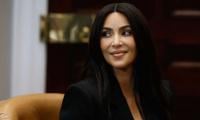ISLAMABAD/ PARIS: The annual report by Reporters Without Borders (RSF) said Tuesday that journalism was at least partly blocked in nearly three-quarters of the 180 countries surveyed.
Its World Press Freedom Index found 73 countries "totally blocked or seriously impeded" journalism, while it was "constrained" in 59 others, adding that many governments had used the pandemic to worsen repression. The RSF ranked Pakistan 145 in the 2021 World Press Freedom Index. The RSF had ranked Pakistan 159/180 back in 2013. It scored Pakistan at +1.34 in 2021 from 45.52 in 2020.
According to the organisation 10 journalists and media assistants were killed in 2021 upto April, while it claimed that 416 journalists were imprisoned. According to RSF the Pakistani media, which have a long tradition of being very lively, have become a priority target for the authorities.
The influence on media has increased dramatically since Imran Khan became prime minister in July 2018. There have been many cases of brazen censorship. Distribution of newspapers has been interrupted. Media outlets have been threatened with the withdrawal of advertising. The signals of TV channels that gave airtime to opposition representatives have been jammed, the report said about Pakistan.
Journalists, who dared to broach subjects deemed off limits, have been subjected to harassment campaigns. Several were abducted in 2020 in order to be told: “Stop covering unwelcome stories or your family won’t find you alive.”
After reining in the traditional media, the authorities have set about purging the Internet and social media of content not to its liking. To that end, the government is trying to step up online “regulation,” by which it clearly means censorship.
A new phenomenon is emerging – cyber-harassment campaigns by trolls against journalists, especially women journalists. Reporters meanwhile continue to be at risk in the field, especially in Balochistan and Khyber Pakhtunkhwa, where they are caught in the crossfire between the security forces and armed rebels. Four journalists were killed in 2020 in connection with their reporting, especially investigative reporting on corruption or drug trafficking. And, as has been the case for at least a decade, impunity for crimes of violence against journalists is total, the report said. The influence on journalism has increased in the country, it said.
The RSF secretary-general Christophe Deloire said in a statement, said: "Journalism is the best vaccine against disinformation." "Unfortunately, its production and distribution are too often blocked by political, economic, technological and, sometimes, even cultural factors." The report finds Eritrea, North Korea, Turkmenistan, China and Djibouti to have fared worst overall in this year´s RSF ranking. Norway, Finland, Sweden, Denmark and Costa Rica were ranked highest. The Middle East and North Africa region continues to be the most repressive for journalists, the report found, highlighting the worsening situation in Iran, Saudi Arabia, Egypt and Syria over the past year.
"In this region, still the toughest and most dangerous for journalists, the pandemic has exacerbated the problems that have long plagued the press, which was already in its death throes," it said. Malaysia recorded the worst deterioration, down 18 places in the ranking to 119, due in part to a recent "anti-fake news" law "allowing the government to impose its own version of the truth".
RSF said the global level of media freedom remained largely stable overall for the past year, but noted that the figures had deteriorated by 12 percent since the ranking was first launched in 2013.
Part of the problem is falling trust in journalists, fuelled by political polarisation and online misinformation. RSF noted a recent survey by the Edelman Trust that found 59 percent of respondents across 28 countries believed journalists deliberately misled the public.
The World Press Freedom Index is based on questionnaires sent to experts around the world, combined with data on abuse and acts of violence against journalists to form a picture that includes pluralism, media independence, self-censorship and other factors














